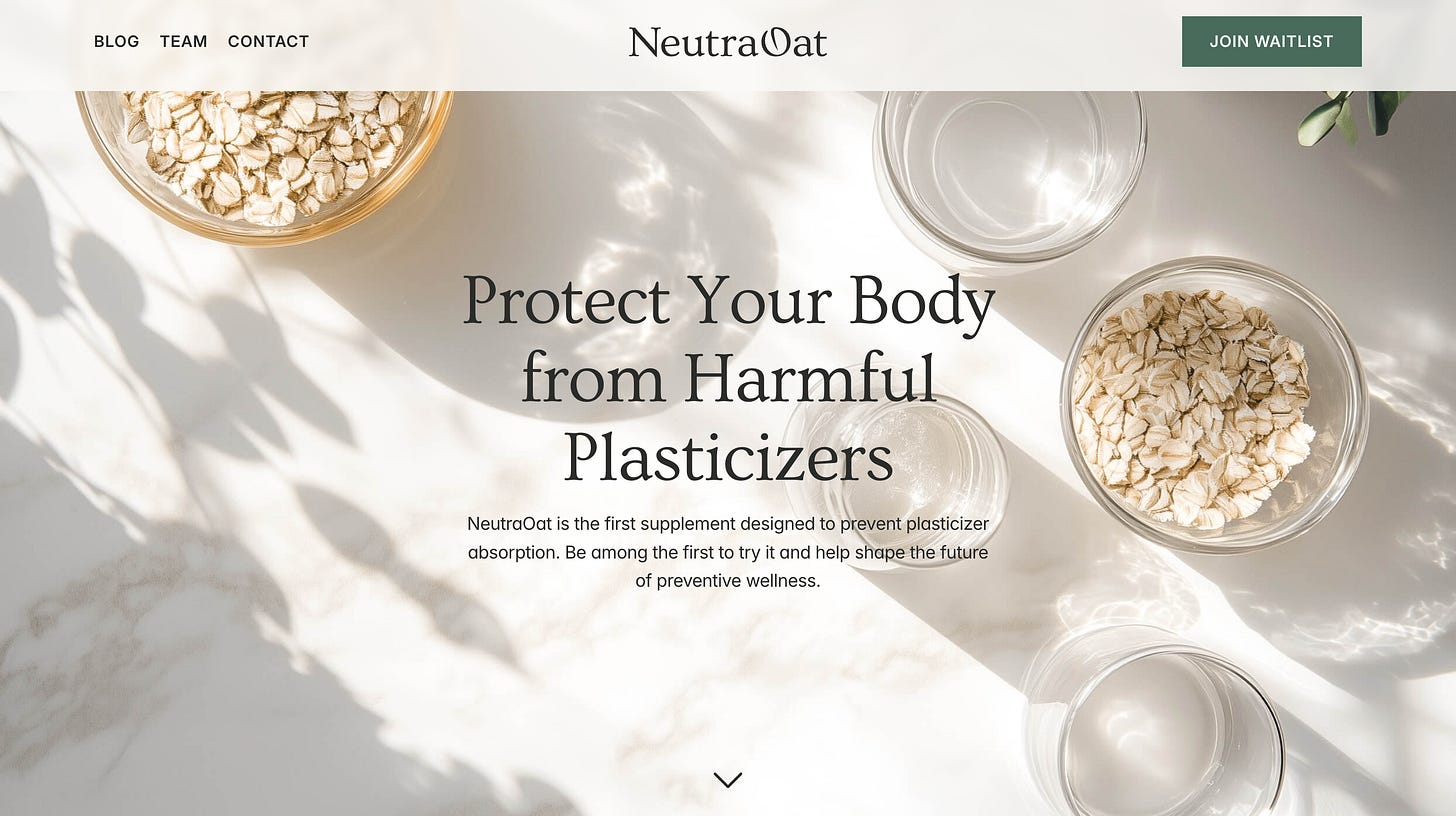>FASTA_16
NeutraOat captures microplastics, Cancer vaccines graveyard, Ozempic but for superpowers, Sequence the damn sperms, Veminsyn's Type XVII collagen, Conductor Labs TEAs, and more
>FASTA sequences the biotech ecosystem, across all domains of life | Papers and patents, acquisitions and bankruptcies, biotech philosophy as dessert | Read in less than 5 min | Follow along on LinkedIn and Twitter.
1. NeutraOat captures microplastics
Few things make me angry in life: inefficiencies, air pollutants in our brains, boring biotech, and microplastics in our blood. No matter how much of an almond mom you are, the microplastics will catch you and your family. They’re in our fertilizers, thus in our crops. They’re in our clothes, thus in our skin. They’re literally in the air, in placenta, salt and honey. BOOOOO!!!! 👻… 😰
How to get rid of them? Bryan Johnson has undergone Total Plasma Exchange (TPE) as a potential way to lower his levels of microplastics and other toxins. But that’s $10,000 USD per session, and several sessions might be required for it to work. Will be interesting to see his results but, what about the rest of us?
Well, this FASTA issue is not yet sponsored by NeutraOat, the first supplement designed to prevent the absorption of plasticizers like BpA and DEHP!!! It’s literally oat, modified with food-grade ingredients to trap plasticizers. Within an hour or two of consuming plasticizer-containing food, NeutraOat will trap the plasticizers, preventing them from entering your bloodstream. Next, you excrete both the hell out of your body!
2. Cancer vaccines graveyard
If we strictly used the term ‘vaccine’ to refer to a preventive measure as opposed to a treatment, there are actually only 2 FDA-approved cancer vaccines in the market, BCG and T-VEC, that target the viruses that may cause that cancer. All the others (e.g. Provenge) are usually cell therapies that train the patient’s immune cells to recognize and kill cancer cells.
In her piece, Kat Kajderowicz outlines biological and clinical reasons why dozens of new (actual) cancer vaccines tested since the 90s have failed to prove efficacy in clinical trials (even at phase III). As a complete ignorant of cancer medicine, I got curious about how patient selection may be optimized and how helpful single-cell sequencing may be in navigating the genetically heterogeneous cancer maze.
On the bright side, literally one day after that blog post was published, Strand Tx announced promising results in their Phase 1 trials for their mRNA ‘vaccine’ in advanced melanoma patients. While Strand is going the monotherapy route, Kat reasons most cancers will probably require immunomodulatory agents in addition to the vaccines.
3. Ozempic but for superpowers
In 2009, scientists from UCSF discovered a single-point mutation that grants a whole family of people the ability to sleep only 4-6h per night without developing any cognitive, metabolic, or emotional impairments. The gene, DEC2, codes for a transcriptional repressor that usually inhibits the “wakefulness hormone” orexin. When mutated, DEC2 has less repressor activity, resulting in increased orexin expression, and thus prolonged wakefulness.
I was catching up with a friend this week, Isaak Freeman from the Church lab, who’s basically turning these insights into Ozempic for Sleep…
Keep reading with a 7-day free trial
Subscribe to Biopunk to keep reading this post and get 7 days of free access to the full post archives.






